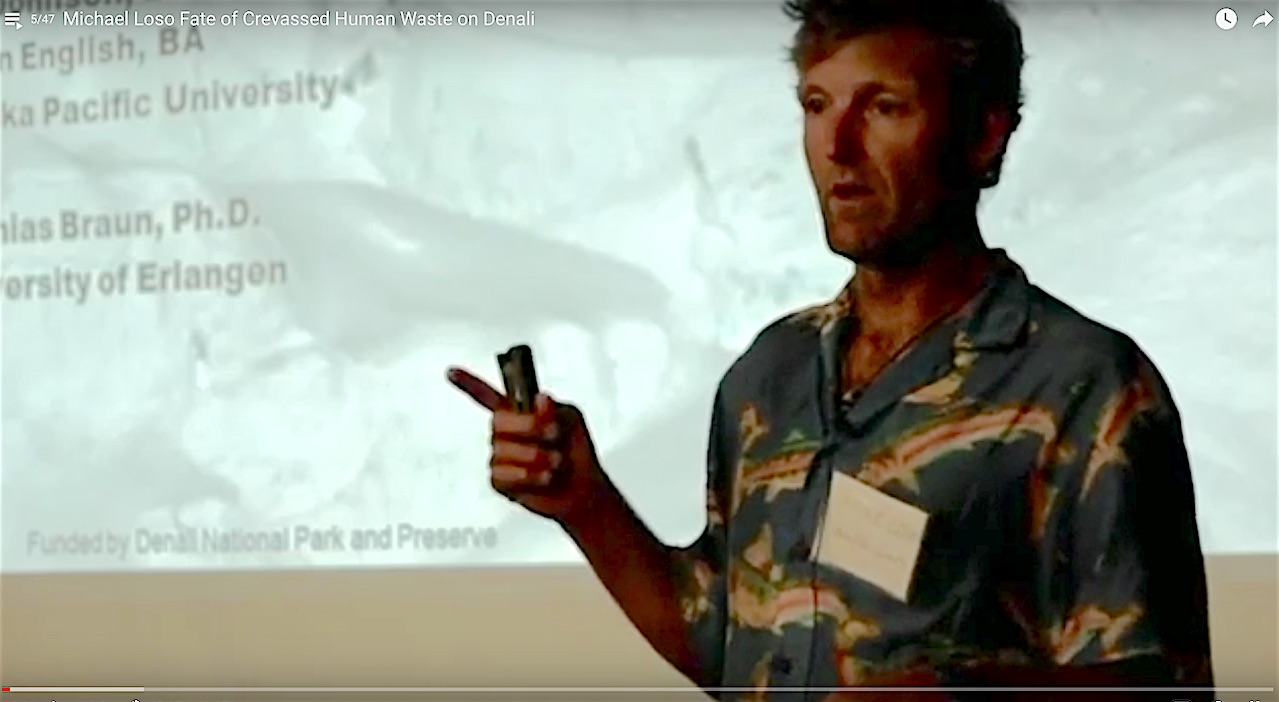Watch Michael Loso’s presentation below:
Each year, over 1,000 climbers attempt to climb Mt. McKinley via the West Buttress, located on the 77 km long Kahiltna Glacier in Denali National Park, Alaska. Climbers generate over two metric tons of human waste annually, the majority of which is disposed of in crevasses. We conducted field studies, performed laboratory experiments, and simulated glacier dynamics to document the trajectory and fate of buried waste in a variety of glacial microclimates. Our results show fecal microorganisms are persistent in a glacial environment, that these pathogens pose a minor threat to human health, and that buried human waste can be expected to emerge at the glacier surface within decades. The implications of these findings for management practices are unclear, however, and I will discuss the pros and cons of a more intensive waste management program, including an assessment of its dollar and carbon costs.
Mike is an Associate Professor of Earth Sciences at Alaska Pacific University in Anchorage. He also directs APU’s Master of Science in Environmental Sciences program, and teaches their annual expeditionary Glaciology and Glacier Travel course. Mike, along with his students, conducts research to understand the recent climatic history of Alaska, and its impact on glaciers, glacial landscapes, and the communities that depend on them. Earlier in his career, Mike worked as a climbing guide and ranger for the American Alpine Institute, St. Elias Alpine Guides, and Denali National Park.
View Mike’s slides below:
